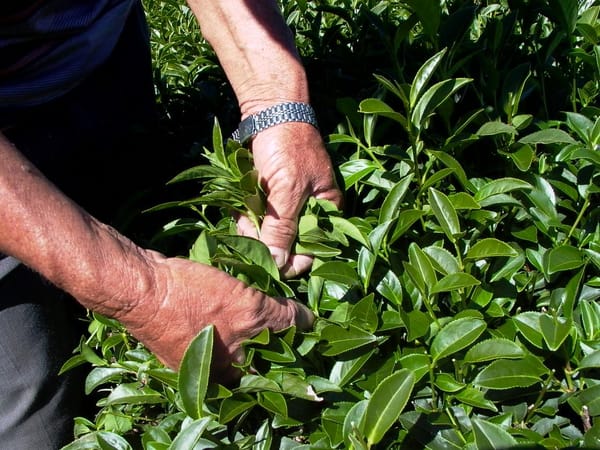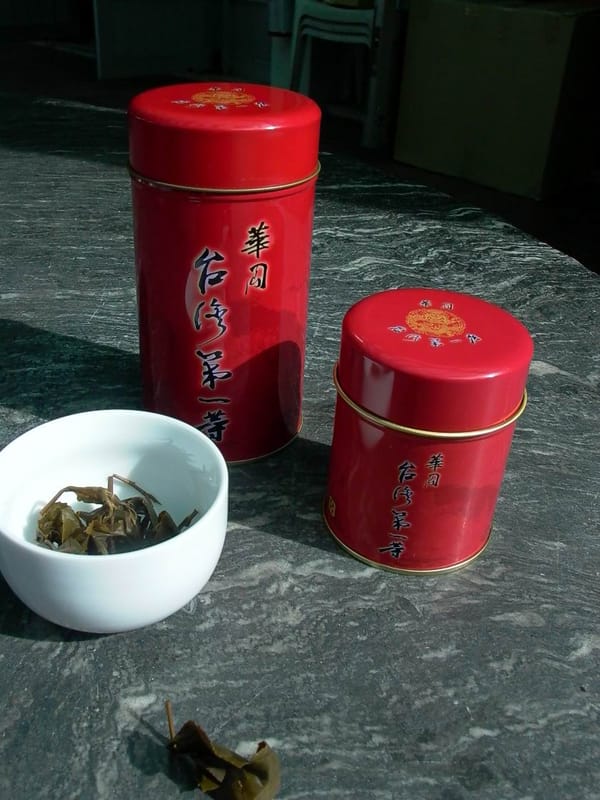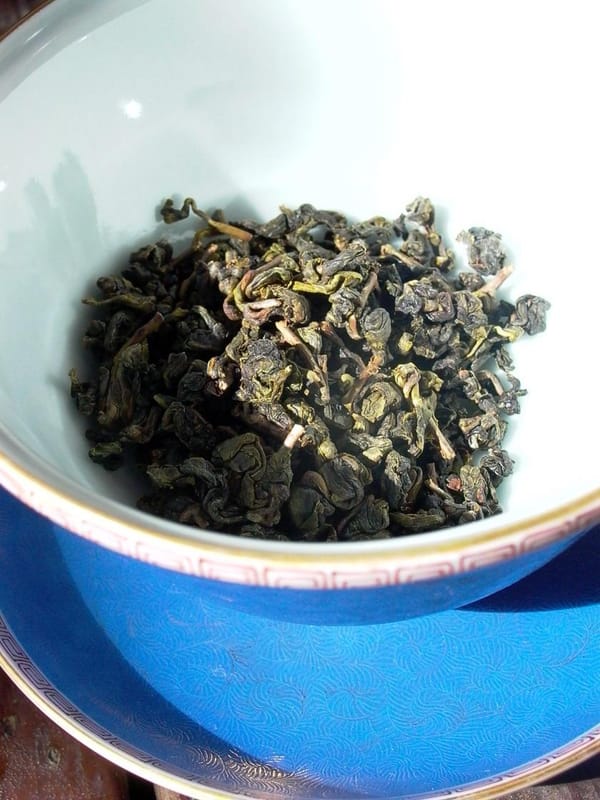When you take a gentle sip of oolong tea and enjoy the lingering sweetness in your mouth, have you ever wondered what kind of nutrients are hidden within that seemingly simple infusion? Beyond the well-known tea polyphenols and caffeine, what vitamins and minerals does oolong tea offer to benefit the human body?
Many people treat oolong tea purely as a leisure beverage, often overlooking its rich nutritional value. In truth, oolong tea is not only a delight for the senses—it also serves as a natural source of nourishment. From essential vitamins to vital minerals, every nutrient plays a role in supporting our health silently and steadily.
Through scientific data and analysis, we’ll delve into the nutritional code of oolong tea—examining how these unseen nutrients accumulate during the tea plant’s growth and offer the body meaningful health support during every cup of tea.
Nutrient Composition Within the Tea Plant
To understand the nutritional value of oolong tea, we must first examine the elemental makeup of the tea plant itself. Organic substances account for 90–95% of the tea plant’s dry matter, while inorganic salts make up 5–10%. Although the percentage of inorganic salts may seem small, it is this 5–10% that provides the diverse and rich mineral content found in tea leaves.
Among these inorganic salts are sixteen essential elements: phosphorus, potassium, calcium, magnesium, sulfur, iron, manganese, zinc, copper, molybdenum, boron, silicon, sodium, cobalt, aluminum, and nickel. These can be divided into three categories:
- Macronutrients (above 0.1% of dry weight): nitrogen, phosphorus, potassium, calcium, magnesium
- Micronutrients (below 100 mg): zinc, copper, molybdenum
- Mesonutrients (in between): manganese, iron
Regardless of their concentration, each of these elements has a unique physiological function and cannot replace one another. This intricate nutritional balance is fundamental to the tea plant’s ability to synthesize complex organic compounds and develop its distinctive flavors.
Functions and Distribution of Key Nutrients
Nitrogen: The Key Factor in Tea Quality
Nitrogen is the most crucial nutrient for tea plants. Leaf nitrogen content can range from 1.5% to 6.5%. Its concentration varies seasonally—spring tea contains the highest nitrogen levels, followed by summer, autumn, and winter teas.
Nitrogen is a core component of various plant enzymes and chlorophyll, directly influencing photosynthesis and carbon metabolism. It also affects several biochemical compounds tied to tea quality, including amino acids, polyphenols, caffeine, and water-soluble solids.
Phosphorus: Essential for Photosynthesis
Phosphorus levels vary by season and plant part. In spring, phosphorus in young leaves can reach 0.3–1.0%, dropping below 0.25% after autumn. Phosphorus absorption strengthens in summer and peaks between July and August before declining again.
Interestingly, phosphorus uptake closely mirrors the intensity of photosynthesis. Even after the aerial parts of the plant cease growing in autumn, the roots continue absorbing phosphorus—preparing for the next spring's high-quality harvest.
Potassium: A Vital Enzyme Activator
Potassium levels in tea plants range from 0.4% to 2.0%, with leaves containing the most (1.6–2.0%). Potassium is highly mobile and activates numerous enzymes. For example, starch-synthesizing enzymes are only activated in the presence of potassium, enabling nitrogen to convert into theanine—a signature amino acid in tea.
The Nutritional Role of Vitamins
Oolong tea’s nutritional value also lies in its vitamin content, which supports essential functions in the human body.
B Vitamins: Oolong tea offers abundant B vitamins. These water-soluble nutrients are key players in energy metabolism and help maintain healthy nervous system function.
Vitamin C: Although partially reduced during the oxidation process, oolong tea still provides a good source of vitamin C. This powerful antioxidant supports immune health and cellular protection.
Vitamins E and K: These fat-soluble vitamins are not extractable via water. Unless consuming powdered green tea (e.g., matcha), drinking tea won't supply these directly—but their presence in the leaf underscores tea’s nutritional completeness as a plant-based food.
Mineral Benefits and Health Effects
Minerals in oolong tea account for about 5% of its dry weight, with roughly 80% being water-soluble—making them readily absorbable during infusion.
Alkaline Food Characteristics: Thanks to its mineral content, tea is considered an alkaline food (ash pH around 9.40). This helps maintain the body's pH balance—particularly valuable in today’s predominantly acidic dietary patterns.
Fluoride for Dental Health: Dry tea contains 150–300 ppm of fluoride, but during brewing, fluoride is slowly released at about 1 ppm. This gradual release helps prevent tooth decay—offering natural dental protection for habitual tea drinkers.
Micronutrient Synergy: Essential to enzymes and hormones, trace minerals like zinc, copper, and molybdenum—though present in small quantities—play critical roles in biological systems and metabolic processes.
Regional Variations in Nutrient Content
The nutrient composition of oolong tea varies significantly by region, reflecting unique soil profiles and climate conditions across Taiwan.
For instance, comparative studies between Wenshan (Shenkeng) and Taoyuan (Guishan) show differences in water content, soluble and insoluble ash, extractives, polyphenol levels, and caffeine concentration.
Spring and winter teas also differ nutritionally. Spring teas tend to be more balanced, while winter teas may contain higher concentrations of specific nutrients. These seasonal differences highlight how choosing teas from different harvests can provide varied nutritional benefits.
Altitude also plays a key role. High-mountain teas, grown in misty environments with large day–night temperature shifts, grow more slowly—allowing nutrients to accumulate. This is a key reason for their higher market value.
Best Practices for Nutrient Absorption
To fully benefit from oolong tea’s nutritional offerings, it’s important to brew and drink tea correctly.
Moderate Consumption: 3–6 cups per day is recommended. This provides sufficient nutrients without overloading the body with caffeine. The average adult can safely consume up to 300 mg of caffeine daily (around six cups of tea), most of which is excreted within hours.
Consistent Intake: Tea polyphenols exit the body in about nine hours. To maintain antioxidant levels in the bloodstream, consistent tea consumption throughout the day is beneficial—reinforcing the cultural practice of drinking tea regularly.
Fresh Brewing: Always prepare fresh infusions. Letting brewed tea sit for too long leads to nutrient loss. Use the right amount per session to ensure freshness and maximum health benefits.
Oolong Tea and Nutrition
Oolong tea is far more than a flavorful drink—it is a plant-based nutritional treasure. From macronutrients and micronutrients to vitamins and minerals, each component plays a role in protecting and supporting human health.
Understanding oolong tea’s nutritional code helps us appreciate its deeper value—beyond flavor. The next time you raise your cup, consider the quiet yet powerful nourishment it provides. With proper brewing and regular consumption, oolong tea becomes a trusted ally in daily wellness.





